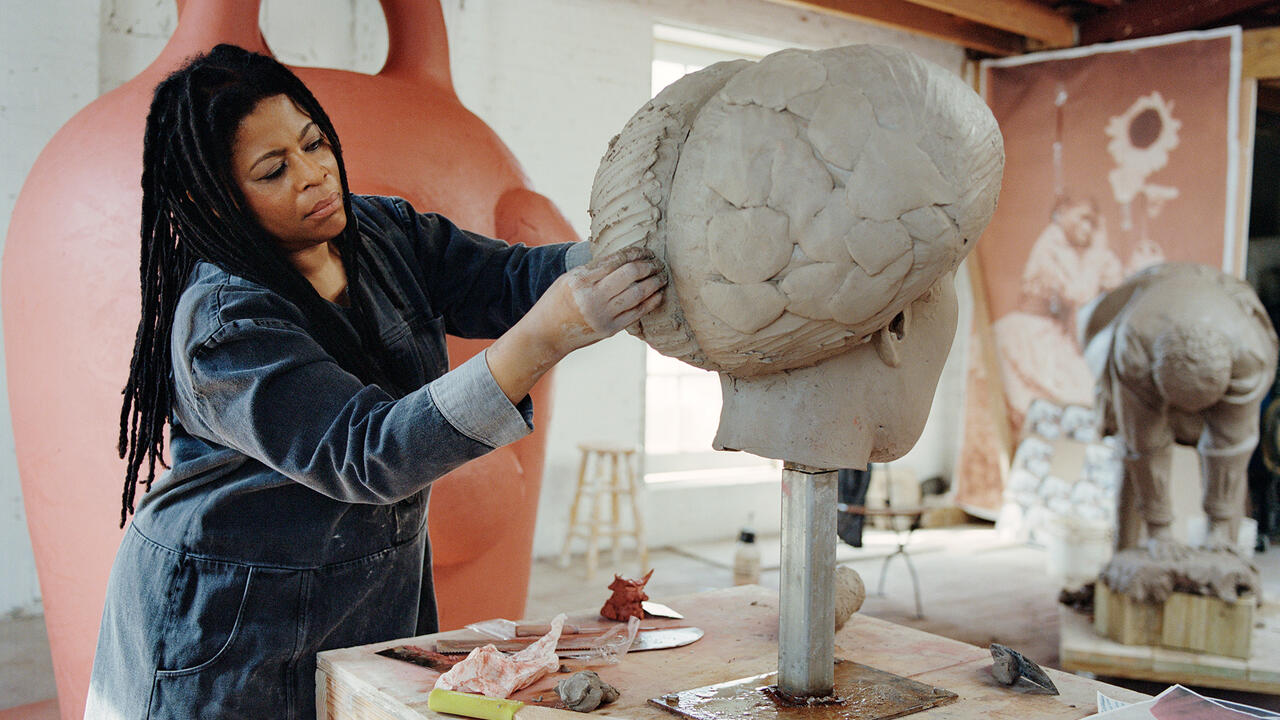Dress Sense
Snow White, architecture and intolerance
Snow White, architecture and intolerance

Disney doesn’t always take kindly to its fans. Just ask the Finnish artist Pilvi Takala. Dressed up as the heroine of Walt Disney’s first full-length animated film, Snow White and the Seven Dwarfs (1937), Takala was refused entry to Disneyland Paris. A security guard explained in faltering English that a real Snow White – or rather a real Blanche Neige – was working inside. When Takala pointed to other smaller visitors wearing costumes, the guard said that only children are allowed to dress up in Disneyland. ‘We don’t know what you are going to do,’ he told Takala. ‘Maybe you are going to do bad things.’
Takala’s misadventure, which is captured in the video Real Snow White (2009), is an allegory of the uneasy integration of foreigners. Her rejection from Disneyland – a border, albeit between reality and fantasy – recalls the fate of many illegal immigrants, who make the trip to a magical land of promise and try to fit in, only to be sent home again. But, since Takala was rejected on the basis of what she was wearing, her experience evokes the new wardrobe regulations that are affecting even legal immigrants in France. In 2008, a Moroccan woman was refused French citizenship for wearing a niqab, while earlier this year, a man, whose nationality was not specified, was refused because his wife wore the burkha.
Such incidents anticipate a recent move by French legislators to endorse a national ban on the burkha and the niqab, which cover not only the body but also most of the face. A French law passed in 2004 has already banned students from wearing ‘conspicuous’ religious symbols – from the Muslim headscarf to the Jewish kippah – in state schools in the name of upholding secularism. While the new ban is not yet law, legislators have considered preventing women from appearing fully veiled in schools, hospitals and day-care centres, and even from travelling on public transport. According to France’s Interior Ministry, only 1,900 women actually wear the burkha and the niqab; two-thirds of them are French citizens, while a quarter are Muslim converts.
Why should artists care about France’s examination of such legislation? Because using the law to define the ideal appearance of citizens in public spaces represents a step towards the aestheticization of citizenship, if not of politics itself. In 1935, Walter Benjamin warned of fascism’s aestheticization of politics and urged artists to respond by politicizing their work. While bans on full-body veils are being debated in other European countries, Switzerland opted for a similar aesthetic restriction last November by voting against the construction of any future minarets in the country. Whatever your position on veils and minarets, banning them is merely a cosmetic solution. Are clothes and architecture inherently misogynist or extremist? Takala could have done ‘bad things’ in Disneyland with or without her costume.
As objects, the burkha and the niqab resemble the voluminous black focusing cloths donned by the first photographers, who were shrouded behind the camera’s viewfinder. Perhaps that’s the real offence of the full veils: seeing without being seen. But when visibility becomes an imperative of the state, citizens become like mini-exhibitions, always on display and ready to be photographed – especially by surveillance cameras. It should come as no surprise that France has already explored bans on wearing hoods and masks at demonstrations. Any future veil ban would come with a list of exceptions when citizens are allowed to cover their faces in public: not at protests but at carnivals and cultural events. There’s been no word on how such a law would affect veiled tourists, let alone visitors to Disneyland Paris, whose holding company, Euro Disney S.C.A., is partially owned by the Saudi prince, Al-Waleed bin Talal.
Whether a full-body veil debases women is a matter of much debate. But, in light of women’s daily exposure in advertising, one might wonder why the French legislators are not considering outlawing size-zero models, too. A starved body is always a health hazard, whereas a veil is not always a sign of sexism or misogyny, let alone of terrorism or holy war. In my eyes, equal rights between the sexes don’t seem to be about weight or even wardrobe. Whatever I weigh or wear, I still don’t earn as much as men. Yet, as the tale of Snow White tells us, a woman’s appearance can certainly play a role in attracting a Prince Charming who will not only marry her but also save her from the deadly envy of other women.
And what about the real Blanche Neige at Disneyland Paris? It sounds like she is still sleeping. As the guard explained to Takala, living in the world of fantasy is not easy. ‘You can’t speak, you can’t smoke, you can’t eat, you can’t drink,’ he clarified. ‘And that’s a big problem.’ No kidding. Someone should get Blanche Neige a lawyer. As far as women’s rights go, that sounds even worse than the Taliban.
























